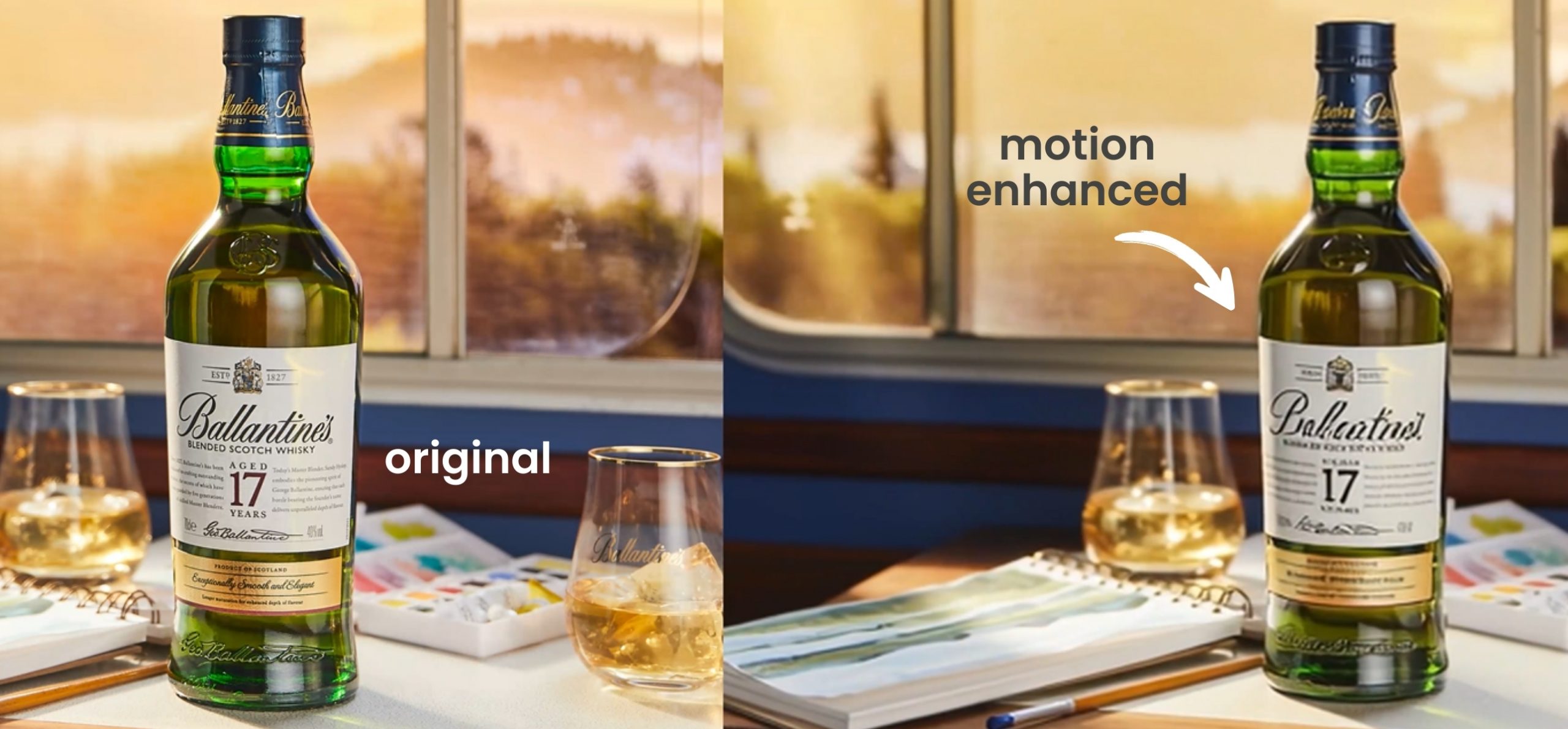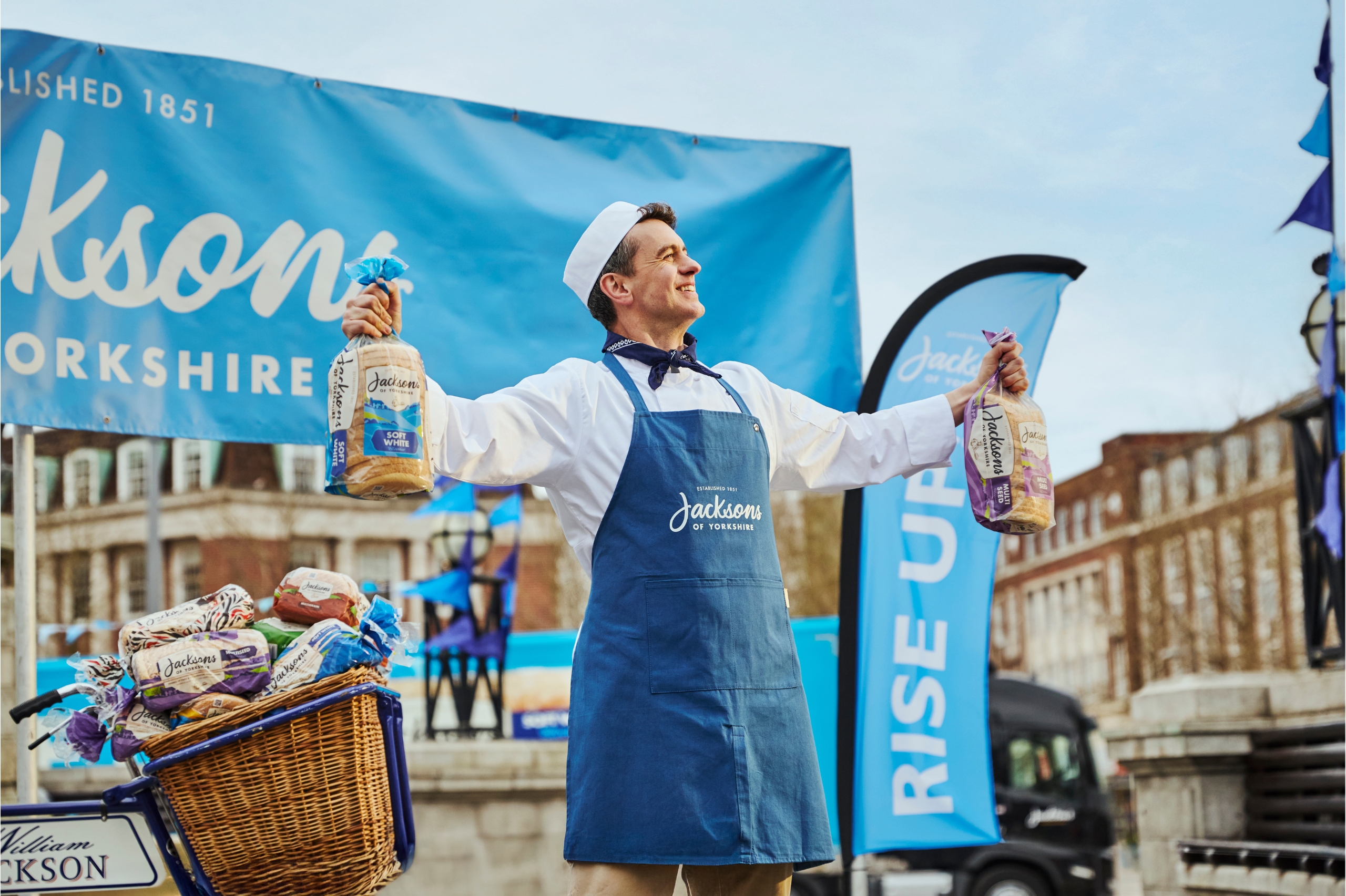Products and labels: AI’s biggest headache
AI tools that turn still images into moving video are everywhere right now. From breathing life into old photos to adding motion to product shots for social, it feels like the creative possibilities are endless.
And while the tech is genuinely exciting, it’s not the silver bullet some would like us to believe. Especially when it comes to products and labels.
Definitely AI’s weakest spot.
About this post
Published
Author
September 4, 2025
The opportunities
AI can now add camera moves, create smooth transitions and even stitch together frames between stills. Check out some of our favourite AI video use cases here. For marketers and creators, that means:
Creative flexibility: Because AI tools are non-destructive, you can test out multiple looks (zoom, pan, tilt, parallax) before deciding what to take further in production. It’s a safe environment for experimentation without wasted spend.
More mileage from assets: You can squeeze extra content out of existing photography by adding motion. Seasonal updates, reactive social content and ad variations can all be generated faster by repurposing what you already own.
Budget friendly options: For smaller budgets with smaller ideas/ambitions, AI can create a decent first pass without committing to a full shoot, but of course it comes with creative compromises. Think of it as a prototype or filler content rather than a showcase piece!
The limitations
All sounds good, right? Well, the reality is that despite the hype, AI is far from perfect. One of the key issues lies in products and labels recognition. AI often struggles to correctly interpret and segment elements within an image:
- Objects can merge, distort or move unnaturally.
- Fine details like text, labels, and branding elements frequently become misaligned or blurry.
- Predictive motion can create unrealistic artifacts, particularly when dealing with complex compositions.
See example below from an AI-generated video by our Post-Production Manager, Paul Wingfield.

Paul gives his thoughts on the topic – “Over the past couple of years, AI tools have gone from being neat extras to must-haves in photo and video work, if cutting time and cost is the priority. Generative AI has also opened the door to creative tricks like extending scenes, swapping out objects, or helping plan shots with AI storyboards. That said, the tech isn’t perfect: things like labels, text, hair, lighting or fast motion can still trip it up, and you’ll usually need a bit of manual tweaking. With Google introducing Nano Banana, label transformation onto different scenes, products and environments might have been solved for stills, yet we still await an implementation for replicating labels on video generations.”
This is why traditional rotoscoping and manual editing remain absolutely essential. Rotoscoping (meticulously separating objects from backgrounds frame by frame) ensures that labels, logos and key product features remain accurate and visually consistent.
While AI can suggest motion, humans are still very much needed to maintain fidelity to the brand and the product.
Not sure what rotoscoping is?
Check it out below.
So, when should you use AI for video, and when should you think twice?
AI generated video is brilliant for creative explorations, social media experiments or preliminary visualisation. But for content where accuracy matters, like product launches, commercials or high-stakes marketing, traditional production techniques are still the gold standard.
For us, it’s never AI versus humans: the two work best together. The real skill lies in knowing when to let the tech do its thing and when to lean on human creativity to keep content compelling and trustworthy.





